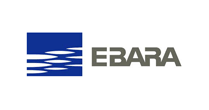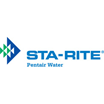One crucial aspect of our daily lives, water pressure, affects everything from washing dishes to watering the lawn. It can easily impact the quality of life in your home. But if it’s inadequate, things can easily become frustrating. You can install single water pressure booster pumps to solve this issue.
Single Water Booster Pumps
A single water booster pump is essential equipment for any water supply system. It is used to increase the water pressure in a system to ensure an adequate water supply for any given purpose. A booster water pump increases the water pressure by taking in low-pressure water, compressing it, and then delivering the pressurized water to a desired location.
single booster pumps are designed to provide a steady water flow while minimizing the energy required to keep the system running. This is accomplished by utilizing a single pump motor rather than multiple pumps. As a result, a single booster water pump can save you money and energy.
Operation of a Single Water Pressure Booster Pump
Single-pressure booster pumps work by utilizing a motor that powers the pump. When the water enters the pump, the motor creates a low-pressure zone that causes the water to flow into the area. Subsequently, the pump increases the water pressure and delivers it through your domestic plumbing system.
Once the desired water pressure has been reached, the booster pump shuts off until it is needed again. Below are a few of the top benefits of using single booster pumps:
-
Quality Water Pressure:
The primary benefit of a single water pressure booster pump is to improve the water pressure in your home. This means you can shower, wash dishes, water plants, and do laundry more effectively.
-
Better Performance:
A single water pressure booster pump can also help you improve your plumbing system’s performance and ensure that water flows more consistently and evenly throughout your home.
-
Reduced Water Waste:
If you have low water pressure, you may need to run your faucets and showerheads longer to achieve the desired water pressure. This can result in water waste, which is not only bad for the environment but can also increase your water bill. By increasing water pressure, you can reduce water waste and save money on your utility bills.
-
Easy Installation:
Most pumps are easy to install and can be set up in just a few hours. Thus, you can start enjoying the benefits of a pressure water pump when you install it in your home.
-
Cost Effectiveness:
One of the benefits of single water booster pumps is that they are an economical way to increase water pressure in a plumbing system. They make no water pump noise and are ideal for homeowners who need to increase the water pressure of their water supply.
Applications of Single Booster Water Pumps
Single water booster pumps can be used in a variety of applications. For example, automotive systems often use these pumps to increase the water pressure. These boosters can pressurize hydraulic systems by maintaining the pressure in boilers, vessels, and water systems.
HVAC systems rely on single booster pumps to maintain controlled pressure in heating and cooling systems. Other applications include fire suppression systems, high-rise buildings, and wastewater treatment.
Specifications of Single Booster Water Pumps
A single water booster pump has several specifications. Depending on the type of building and application, the booster pump’s capacity can range from 0.1 to 400 gallons per minute (GPM). Pressure ratings for a single water booster pump can range from 100 to 600 pounds per square inch (PSI), and temperature may vary from 40°F to 180°F.
The most common power source for a pressure water pump is electricity, which requires a three-phase power source. Other options may include diesel and steam engines. Single water booster pumps can be made from various materials, including cast iron, stainless steel, and bronze.
The Best Water Pressure Booster Pump
Are you experiencing low water pressure in your home? The single water pumps from Callaghan Pump offer quality and dependable performance. These domestic water booster pumps consistently deliver clean water while providing a longer life span than other water booster pumps. Plus, they are equipped with a powerful pump motor capable of generating high pressure to ensure efficient water delivery.
Contact us for more information regarding the best water pressure booster pump.













